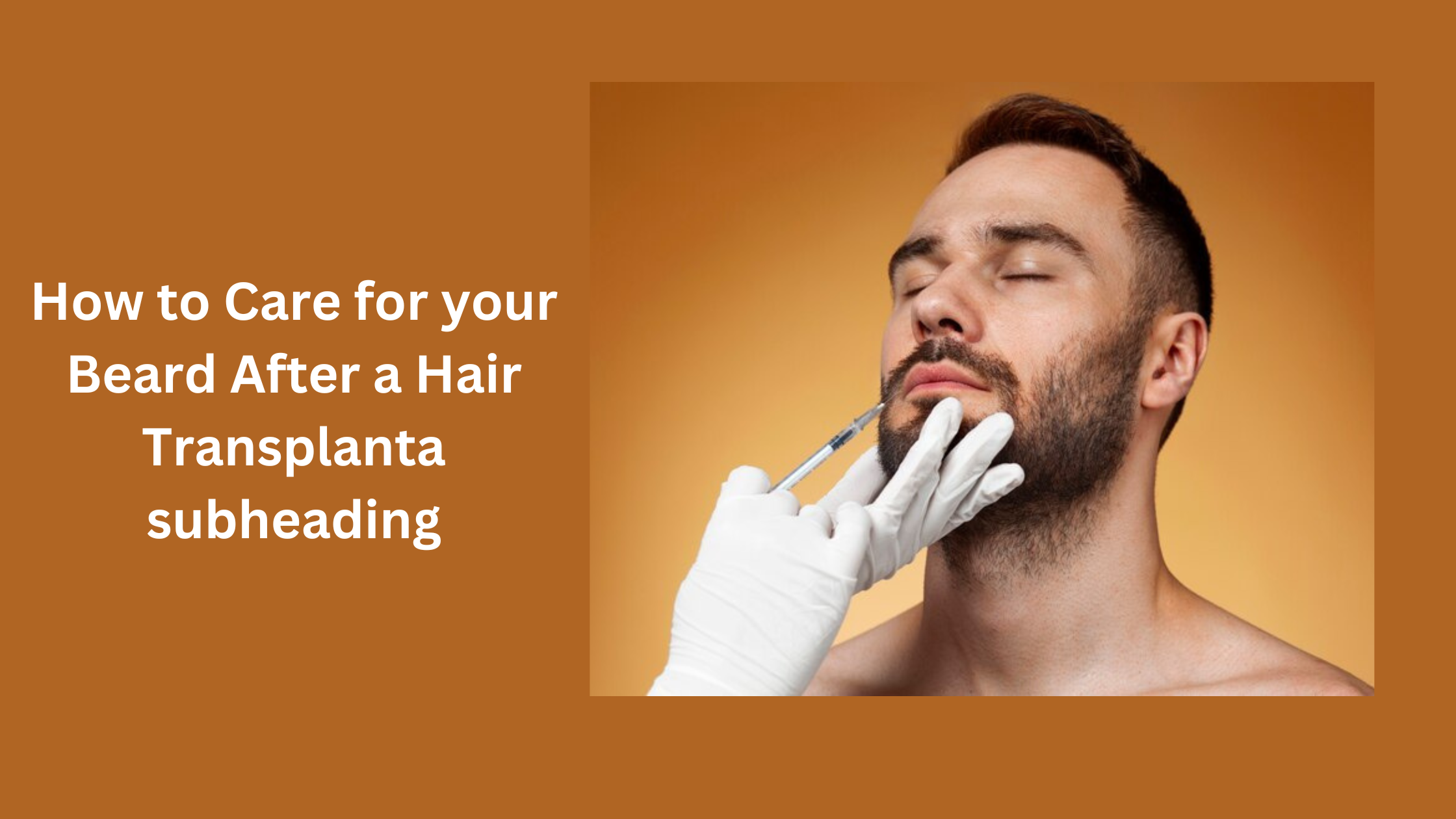Beard hair transplants have become increasingly popular among men seeking to enhance their facial hair. Whether you’re looking to fill in patchy areas or achieve a fuller beard, understanding how to care for your new facial hair post-transplant is essential for optimal results. Proper aftercare can significantly affect your beard's healing process, hair growth,beard hair transplant and overall appearance. This guide will explore the best practices to ensure your beard thrives after a hair transplant.
Understanding the Beard Hair Transplant Procedure
Before diving into aftercare, it's vital to understand what a beard hair transplant involves. This procedure typically uses one of two methods: Follicular Unit Extraction (FUE) or Follicular Unit Transplantation (FUT). In FUE, hair follicles are harvested from a donor area (usually the back of the head) and transplanted into the beard area. FUT involves removing a strip of skin with hair follicles and studying it into individual grafts for transplantation.
The process is minimally invasive and performed under local anesthesia. Most patients experience minimal pain during the procedure but must be aware that some discomfort and care are necessary afterward.
Immediate Aftercare: The First Few Days
The first few days after your beard hair transplant are crucial for ensuring the best possible results. Here are some critical steps to follow:
- Avoid Touching the Transplanted Area: It's vital to avoid touching or scratching the transplanted place for the first few days. This minimizes the infection risk and ensures that the hair follicles remain undisturbed.
- Keep the Area Clean: Your surgeon will give specific instructions on cleaning the transplant site. Generally, it would help if you gently wash your face with a mild, non-abrasive cleanser and lukewarm water. Pat the area dry with a soft towel to avoid rubbing.
- Use Medications as Prescribed: Your surgeon may prescribe antibiotics or anti-inflammatory medications to reduce swelling and prevent infection. Take these medications as directed to support your recovery.
Basic Cleaning and Hygiene Practices
After the initial healing period, maintaining proper hygiene is essential to promote healthy hair growth. Here are some hygiene tips:
- Gentle Washing: Continue to wash your beard area with a gentle cleanser. You can start using a specific beard shampoo a week after your transplant. Look for products that are sulfate-free and designed for sensitive skin.
- Avoid Hot Water: Use lukewarm water instead of hot water when washing your beard. Hot water can irritate the skin and compromise the health of your newly transplanted hair.
- Moisturizing: Keep the skin under your beard hydrated with a suitable moisturizer. Look for products that contain natural ingredients to soothe and nourish the skin.
Managing Swelling and Discomfort
Some swelling and discomfort are joint after a beard hair transplant. Here’s how to manage these symptoms:
- Cold Compresses: Applying cold compresses to the treated area can help reduce swelling. Be sure to wrap ice packs in a clean cloth to avoid direct contact with the skin.
- Head Elevation: Sleep with your head elevated for the first few nights to help reduce swelling. This position can promote better circulation and healing.
- Limit Physical Activity: Avoid strenuous exercise or activities that could cause excessive sweating for at least a week after the procedure. Sweat can irritate the transplant site and hinder recovery.
Protecting Your Transplant from Sun Exposure
Protecting your new beard from the sun is crucial during the healing process. Excessive sun exposure can damage the skin and affect hair growth. Here are some tips:
- Wear a Hat: A wide-brimmed hat can provide shade and protect your face from direct sunlight.
- Use Sunscreen: After a few days, once your skin has healed, apply a broad-spectrum sunscreen with at least SPF 30 to the transplant area when going outdoors.
Gradual Return to Normal Activities
While it’s essential to rest after your beard hair transplant, you’ll eventually want to return to your regular activities. Here’s how to do it safely:
- Follow Your Surgeon’s Guidelines: Your surgeon will provide a timeline for resuming normal activities. Be sure to follow their recommendations carefully.
- Introduce Activities Slowly: Start with light activities and gradually increase intensity as you feel comfortable. Listen to your body and take breaks when needed.
Incorporating Beard Care Products
Once your beard grows, using the right care products can enhance its health and appearance. Consider these products:
- Beard Oil: Beard oil can help nourish the hair and skin, making your beard softer and shinier. Look for oils containing natural ingredients like argan or jojoba oil.
- Beard Balm: Beard balm can help style and keep your beard in place. It also provides added moisture and protection.
- Comb or Brush: Use a wide-toothed comb or a soft brush to detangle your beard gently. This can help distribute natural oils and prevent breakage.
Selecting a Long-Term Beard Care Routine
After the initial recovery period, establishing a long-term beard hair transplant care routine will help you maintain the health of your new facial hair. Consider these tips:
- Regular Trimming: Regular trimming can help maintain its shape and remove split ends as your beard grows.
- Continued Moisturization: Keep your beard and the skin underneath well-moisturized to prevent dryness and flakiness.
- Healthy Diet: A balanced diet rich in vitamins and minerals will support healthy hair growth. Foods with omega-3 fatty acids, biotin, and proteins can be particularly beneficial.
The Importance of Nutrition and Hydration for Hair Health
Your body requires proper nutrition and hydration for hair to thrive. Here’s what to consider:
- Stay Hydrated: Drinking plenty of water is crucial for overall health and helps keep your hair follicles hydrated.
- Balanced Diet: Incorporate fruits, vegetables, lean proteins, and healthy fats into your diet to supply the nutrients necessary for optimal hair growth.
Common Mistakes to Avoid After a Hair Transplant
To ensure the best results, avoid common mistakes that could jeopardize your beard's health:
- Ignoring Aftercare Instructions: Always adhere to the guidelines provided by your surgeon.
- Smoking and Alcohol Consumption: Both can impair healing and affect hair growth. It's best to avoid these substances during your recovery period.
- Picking or Scratching: Avoid touching or picking at the transplant site, as this can lead to infection or damage.
Conclusion: Enjoying Your New Beard
Caring for your beard after a hair transplant is essential for achieving the best results. You can ensure your new beard thrives by following proper aftercare techniques, incorporating the right products, and maintaining a healthy lifestyle. Remember that patience is vital; hair growth takes time, but with the appropriate care, you’ll soon enjoy a fuller, more defined beard hair transplant that enhances your facial appearance.
For more information on beard hair transplants and to explore options for facial hair restoration, consider visiting Beverly Hills Hair Restoration. With the proper care and attention, your beard can become a source of confidence and style for years.

